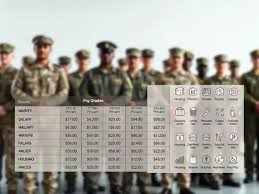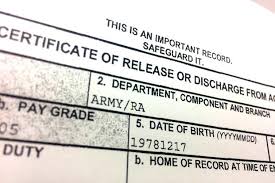How to Read Your Leave and Earnings Statement (LES) ?
For military personnel—including those in the U.S. Armed Forces—a Leave and Earnings Statement (LES is a must-have document since it provides vital information about their pay, leave balances, and deductions. Managing money, guaranteeing accuracy in pay, and tracking total vacation days all depend on an awareness of the LES. This tutorial will walk you through reading your LES and deciphering several sections to guarantee you are getting the right pay and benefits.
Definition of LES
For military service members, an LES is a pay statement including comprehensive information on earnings, deductions, allowances, taxes, and leaves. Like those supplied to civilian employees, it serves as a paycheck stub with extra information pertinent to the special character of military pay and benefits. Your service branch will determine whether this paper is issued biweekly or monthly.
Every LES offers a view of the pay for a certain period; so, it is crucial to know the several sections to guarantee accurate information and absence of pay discrepancies.
Important LES Section Notes
We divide your LES into several parts, each containing essential information about your military pay. The several divisions of an LES are broken out here:
1. Top Section Personal Information
Your LES’s top part will contain your personal information, including
Whole name as recorded in the military system.
Military rank is pay grade, which may be E-4, O-2, etc.
Like the Army, Navy, Air Force, or Marine Corps, your branch of service
Your SSN will be partially masked for security and privacy needs.
Usually spanning two weeks or a monthly period, statement period refers to the range the LES covers.
This part is absolutely important since it confirms that the pay period and the statement match the appropriate person.
2. Earnings Section
Your overall pay period earnings are listed in the Earnings Section. This part comprises your:
The main pay determined by your rank and length of service is called base pay. This is your basic wage, free from any allowances or special incentives.
Allowances are extra money you get depending on different situations. They could include:
If you live off-base or if government housing is not supplied, Basic Allowance for Housing (BAH) is a payment meant to assist with housing expenses.
**Basic Allowance for Subsistence**: Money set aside for food bills.
Pay for hazardous duty, flight pay, or other specific circumstances could all be covered here.
Other allowances could cover items like family separation allowance or abroad pay.
Regularly reviewing your earnings helps you make sure any allowances you are entitled to are proper and included.
3. Section on Deductions
Just as important as it reveals what has been deducted from your salary is the Deductions Section. Common deductions include:
Federal and State Taxes : The deducted sum for income taxes at both the federal and state levels. Your tax filing status and the number of exemptions you seek will determine the precise figure.
Social Security and Medicare: Your contributions to Social Security and Medicare will be used once you retire.
The deductions made for your military retirement system constitute retirement contributions. Often this is a percentage of your base compensation.
Health insurance, life insurance, or other personal deductions, including union dues or allotments automatic payments made from your pay to a third party—may all be deducted from your taxes.
Knowing these deductions guarantees that your money is being utilized for your taxes, savings, and perks rather than for another purpose.
4. Leave Section
Tracking your leave balances depends quite a lot on the Leave Section of your LES. You will find in this part:
Leave Earned : The total leave you have accrued throughout the pay period. Usually earning 2.5 days of leave per month, military personnel can vary in this regard.
Leave Used: Here we will subtract any leaves you took during the period. This will enable you to accurately record your time off usage, so ensuring it for your records.
This indicates your remaining days of absence from Leave Balance. Maintaining this balance will help one to schedule time off or vacation.
Particularly if you are planning for long leaves, vacations, or other absences from work, the section on leaves will assist you in managing your earned time off.
5. Tax Information
The amount of tax deducted from your pay is displayed in this part of the LES. It covers:
The total amount of tax exemption claims you have made.
Whether your filing is as single, married, or head of household,
Reviewing your tax records on a regular basis helps you to make sure you are neither overpaying nor underpaying taxes.

6. TSP, Thrift Savings Plan
Like a 401(k) plan for citizens, the TSP is a retirement savings plan designed specifically for military members. Should you be If You are enrolled.lled in the TSP, the LES will show:
ns from Employees: Your contribution to the TSP in the current period amounts to what?
Government payments: Sometimes, especially if you are contributing a specific proportion of your income, the government may also make payments to your TSP.
Tracking this part helps you make sure your savings for retirement are in line and that your contributions are being correctly deducted.
7. Net Pay and Direct Deposit Ends of Statement
Following your LES, you will find
After all deductions, net pay is the total you will take home. This is the straight payment or amount you will get placed into your account.
The information under Direct Deposit Information will provide your bank account number from which your net salary is deducted. Correcting the information here is crucial to prevent any payment delays.
Final Thought
Military personnel tracking pay, benefits, and leave must first be literate in LES. Regarding your base pay, allowances, deductions, leave, and retirement savings, the statement includes pertinent details. Regular LES examination helps you to spot any differences early on and guarantee that your financial records are in order. Should you have queries or worries, don’t hesitate to contact your finance office or consult internet resources for explanation. Knowing your LES will enable you to more wisely handle your money and prevent pay surprises.






